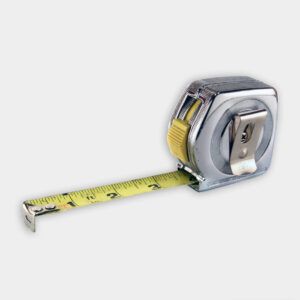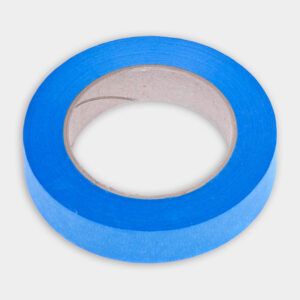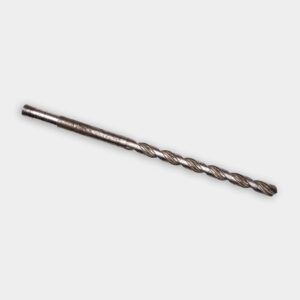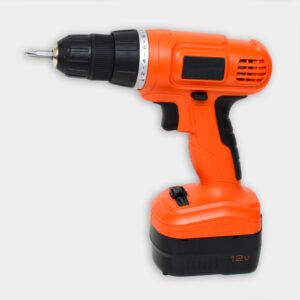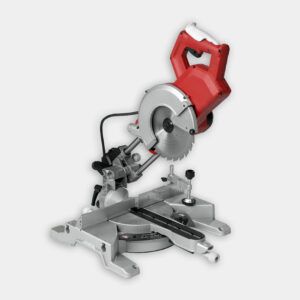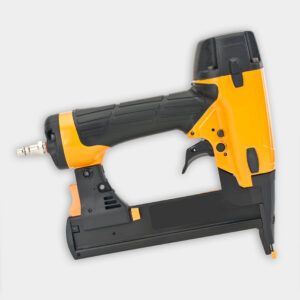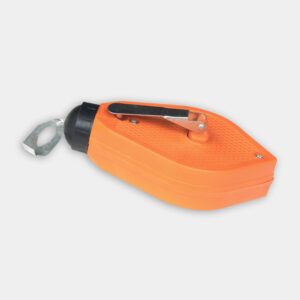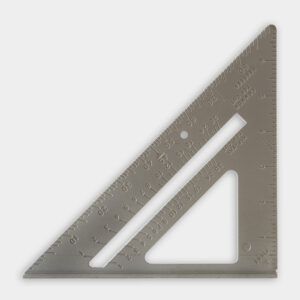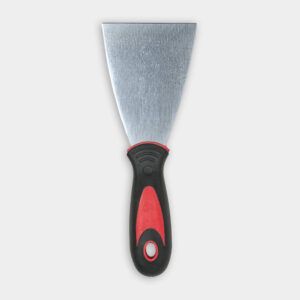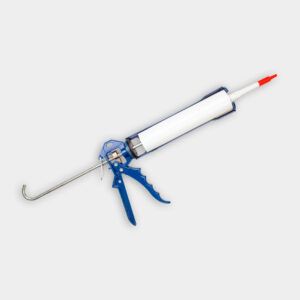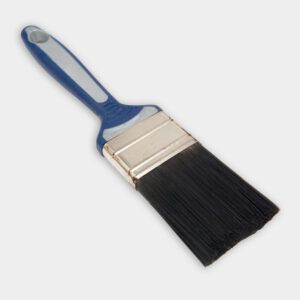We may be compensated if you purchase through links on our website. Our team is committed to delivering honest, objective, and independent reviews on home products and services.
Project details
Skill
Cost
Estimated Time
If you’d like to add dimension and character to a plain room, nothing beats the traditional look of a coffered ceiling. Constructing a coffer’s grid of bold beams on your own may seem daunting, but we’ll show you how even the average DIYer can create this hallmark old-house feature. The secret is our low-profile coffer design, which greatly simplifies working overhead because you’re installing flat boards and molding rather than assembling box beams.
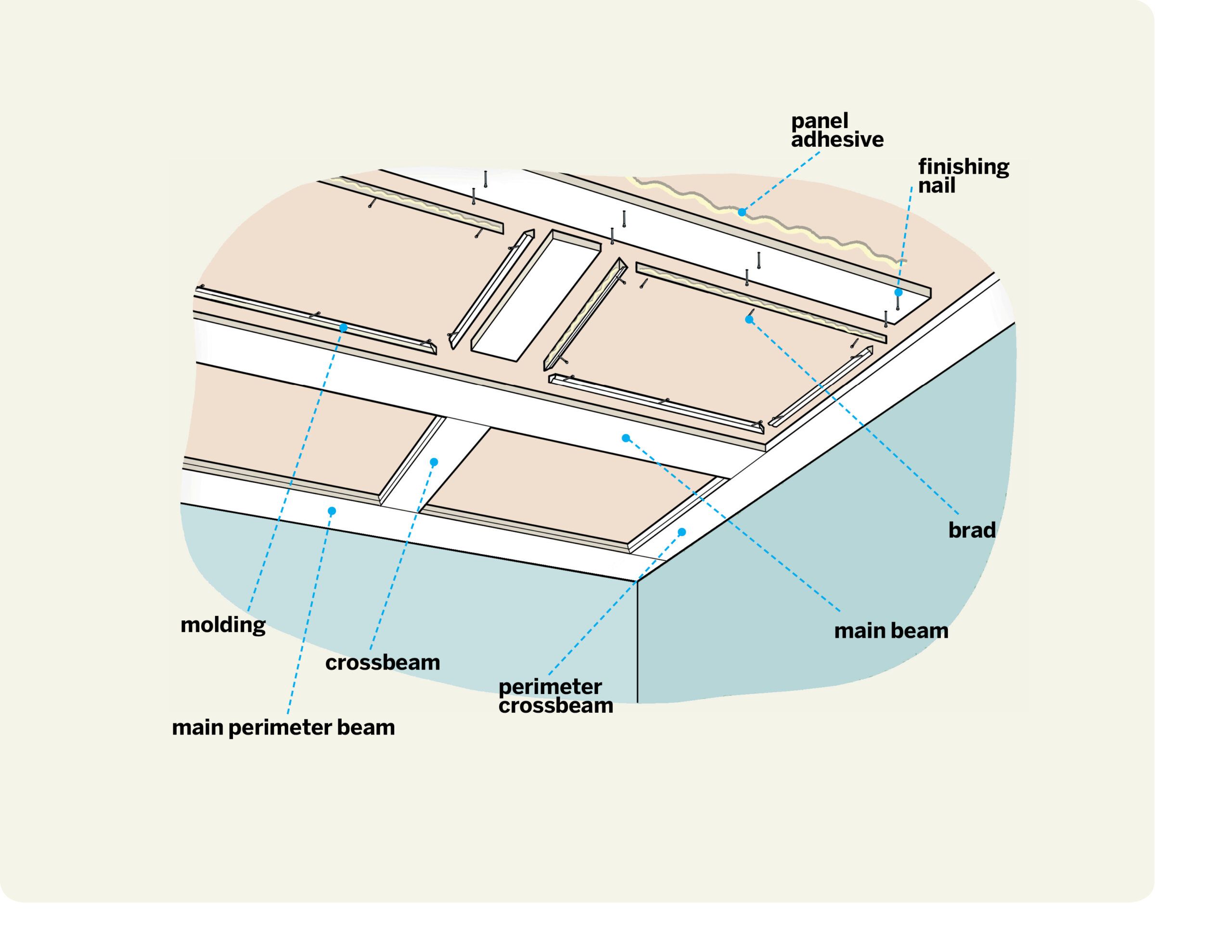
Prepping for Your Coffered Ceiling Build
If you follow our plan, your ceiling project will take two days. On the first day, you’ll install the beams (steps 1-11 below). On the second day, you’ll install molding and paint (steps 12-15).
Tools Needed
Materials Needed
- Primed lumber (such as 1×6 finger-jointed pine)
- Panel adhesive
- Wood glue
- Nails (16-gauge and 18-gauge)
- Wood putty
- Latex caulk
- Paint
Creating a Deadman Support
To assist with installation, especially if working alone, create a T-shaped “deadman” support using scrap lumber. Make it ¾ inch shorter than your ceiling height. This tool will hold one end of the beam against the ceiling as you work, making the installation process much easier. You could also use a “third-hand” support rod, which functions the same way.
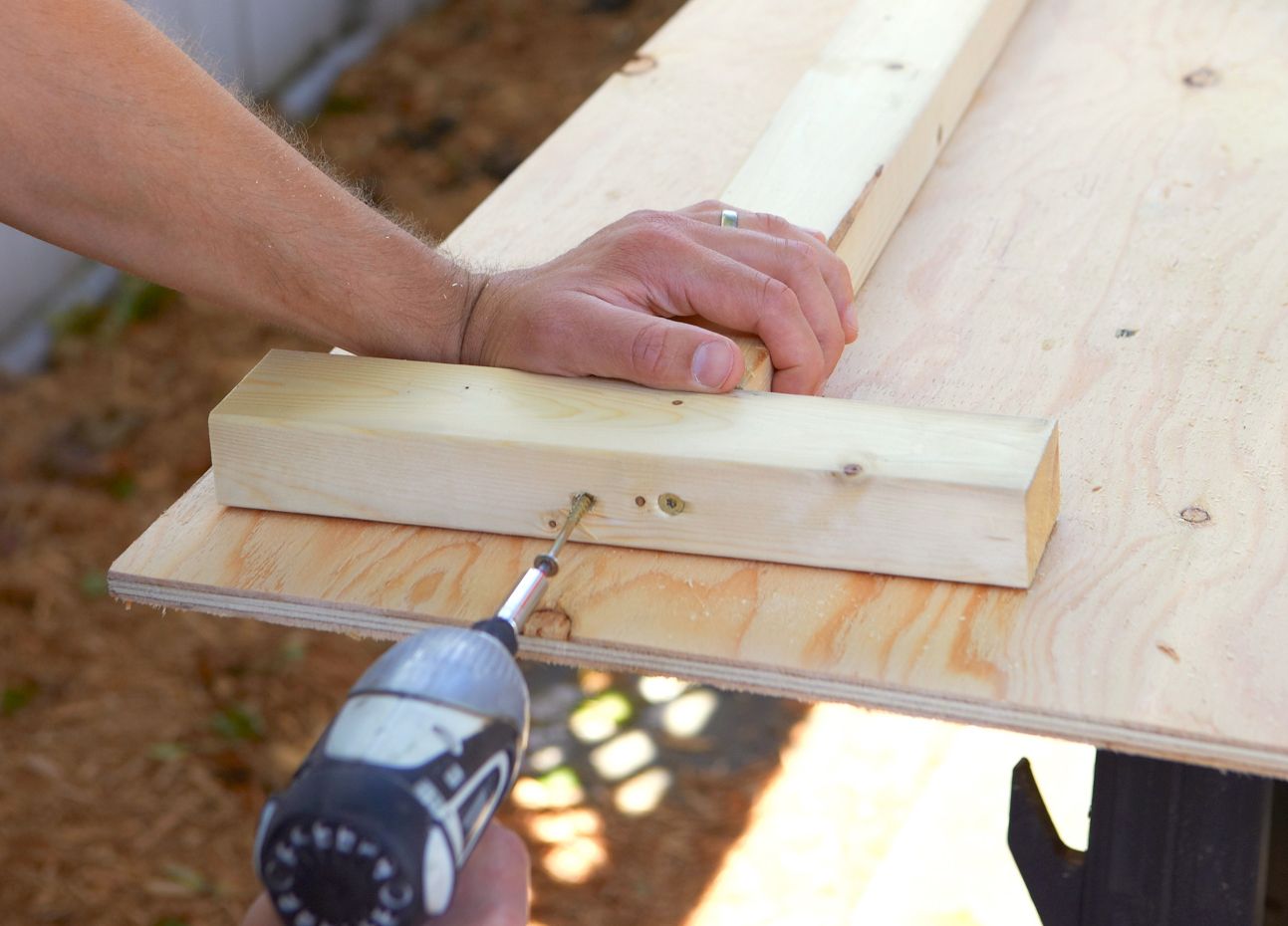
Creating a Coffered Ceiling: Step-by-Step
While it may seem like a daunting project, even DIY enthusiasts can create a stunning coffered ceiling with the right approach. This Old House contributor Chris Beidel demonstrates how to construct a low-profile coffered ceiling that simplifies the process of working overhead.
Step 1: Locate the Joists
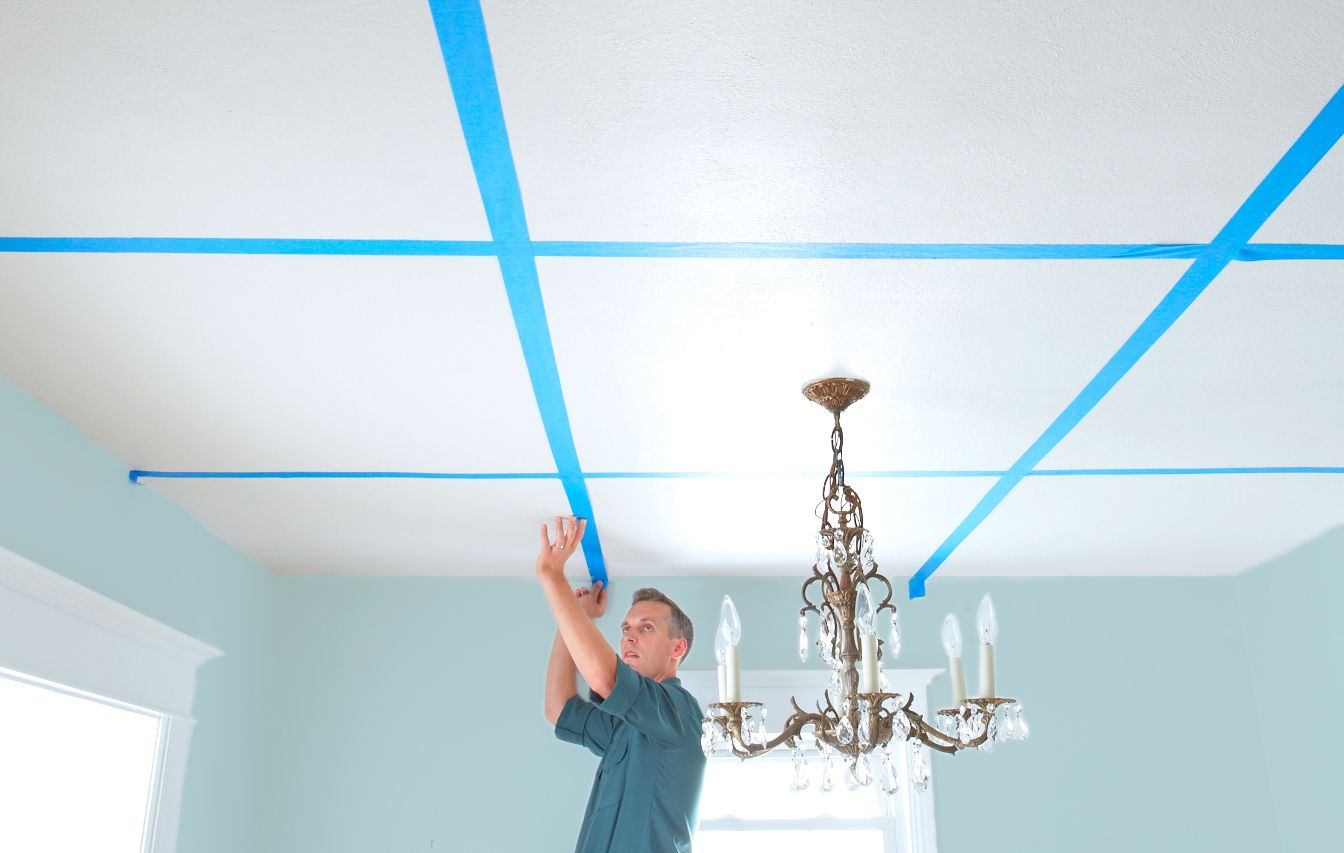
Work out your design on graph paper, mapping lights and major features of the room. We centered our nine-coffer grid around an existing chandelier. Measure and mark where your “beams” will meet the walls, and use painter’s tape to see how the pattern fits the room.
Use a stud finder to locate the ceiling joists. Mark both ends of each joist where it meets the sidewalls. Put a ⅛-inch drill bit in your drill/driver and make test holes near the walls — don’t worry, they’ll be covered by the beams — to verify joist locations and ensure you catch their centers.
Step 2: Cut a Beam

Measure for the first main perimeter beam. If your room is square or irregular, start with a perimeter beam that runs perpendicular to the joists to create a firm connection to the ceiling (if you need two boards to span the length of your room, join them with a plain scarf joint at a joist).
Cut the beam on your miter saw ¼ inch too long. Dry-fit the piece, then apply panel adhesive to the length of the beam. Butt one end into the corner and hold it there with your deadman, as shown.
Tip: The beams need to be tight to the ceiling at the joists, but any gaps that appear between joists will be covered later by the molding.
Step 3: Nail the Beam in Place

Tuck the other end into the opposite corner, creating a bow. Begin at one end and work across, firing two 16-gauge pneumatic nails into each joist with your pneumatic nailer. Voids will be covered with molding and caulk. Measure and cut the opposite perimeter beam, and repeat the installation process.
Step 4: Scribe the Perimeter Crossbeams
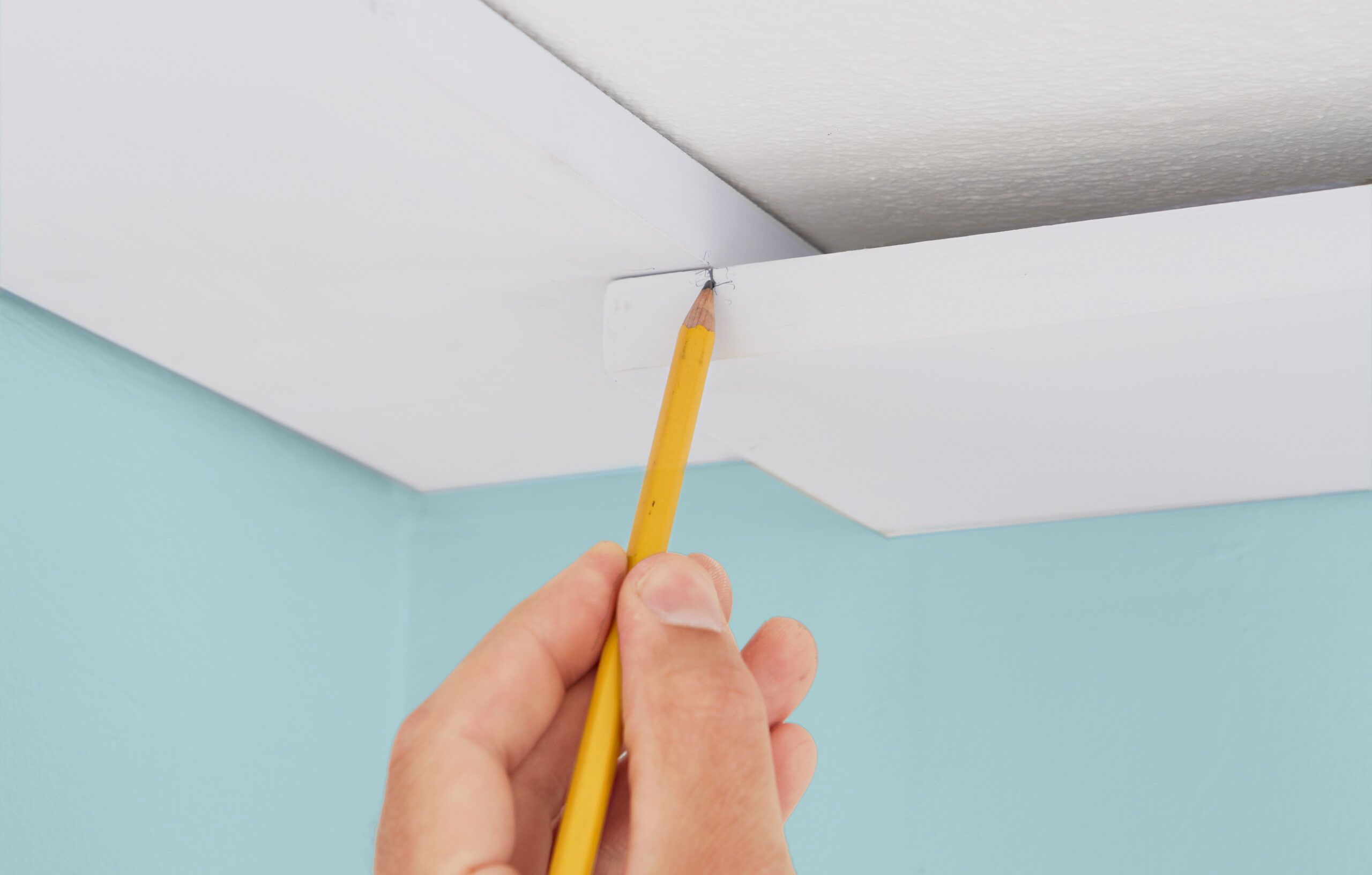
Measure between the main perimeter beams at each end of the room. On a miter saw, cut two 1x6s 3 inches too long.
Using the deadman, hold a rough-cut board overlapping the main beams at each end and mark where it crosses a beam at one end, as shown. To mark its back edge, lay the board face to the wall.
Use a straightedge to connect the front and back marks, creating a scribe line. Scribe one end of the other beam, too.
Step 5: Cut Along the Scribe
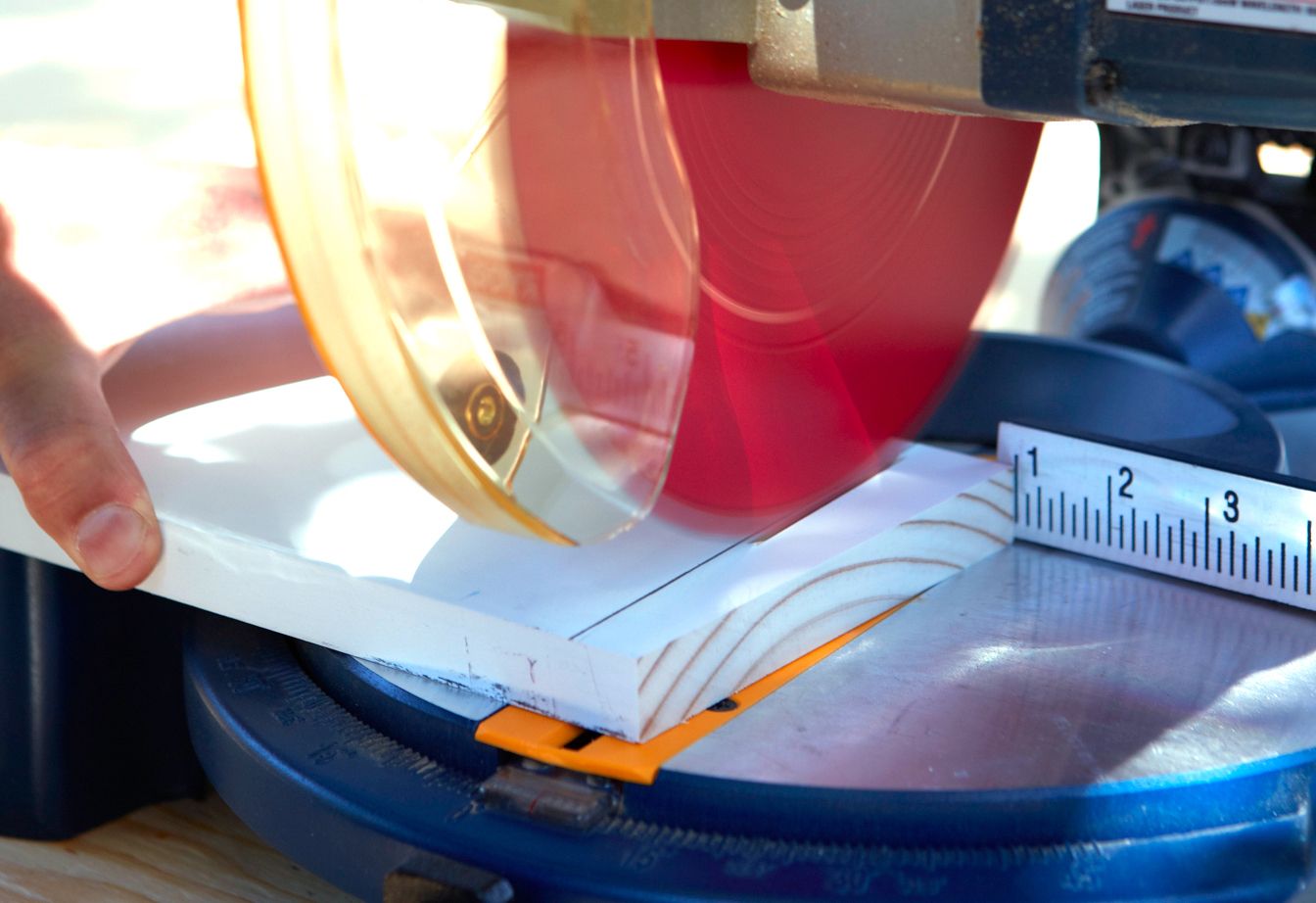
At the miter saw, adjust the blade to match the angle of the scribe line, and make the cut. Repeat for the other beam. Now scribe and cut the opposite end of each beam, leaving them ⅛ inch too long, for a tight fit.
Step 6: Shim the Seam
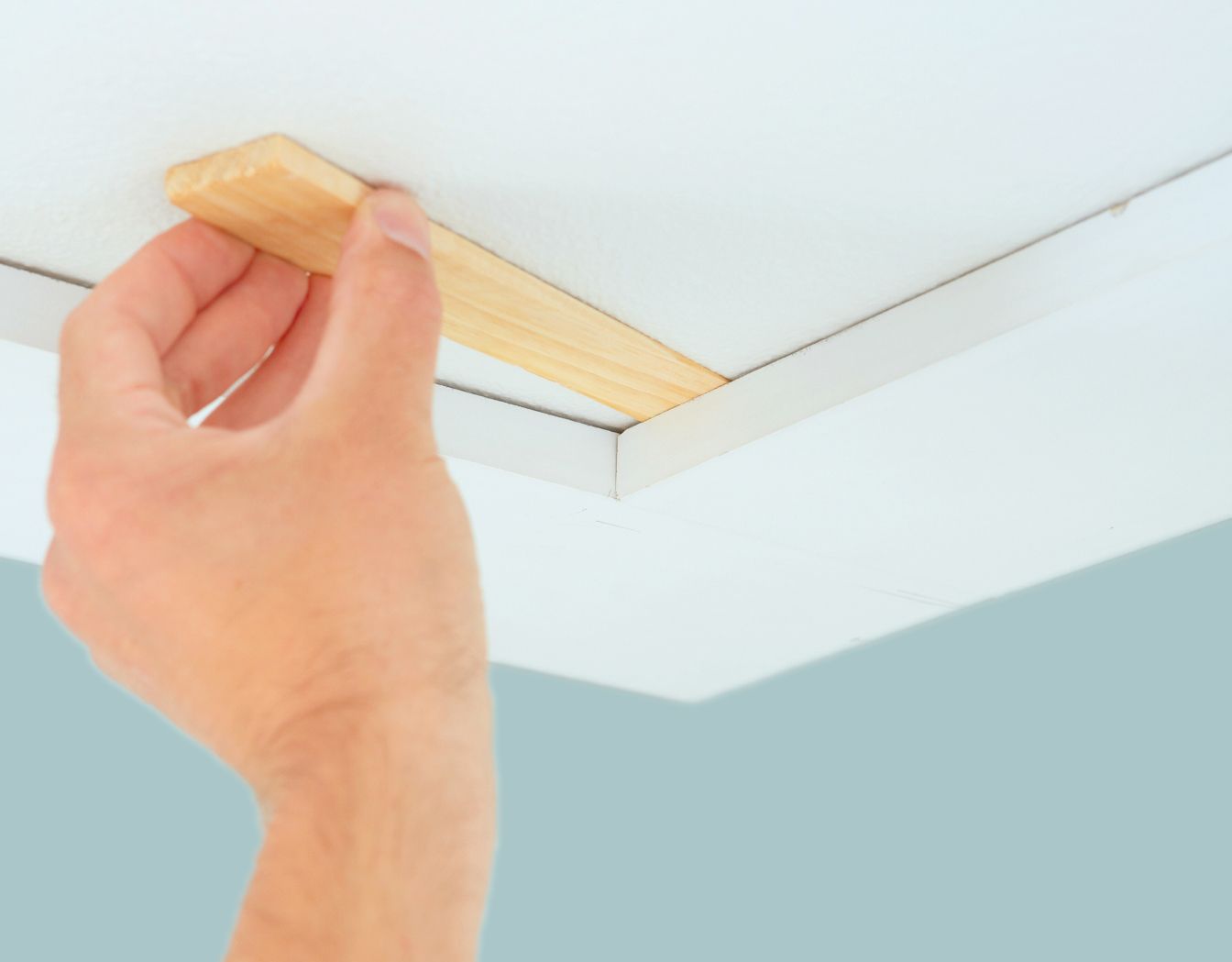
Apply adhesive to a perimeter crossbeam and hold one end in place with your deadman. Fit the other end in place. If the joint is not flat, use shims to bring the surfaces of the two beams flush, as shown. Use the nailer to fire two nails at opposite angles every 12 inches along the perimeter crossbeam.
Remove excess shim by scoring it with a utility knife and snapping it off.
Step 7: Snap a Chalk Line

With the perimeter installed, you can measure and mark locations for the main beams and crossbeams. Use your marks to snap a line with nonstaining chalk to mark one edge of each beam, as shown; then snap lines over each joist.
Step 8: Cut the Main Beams
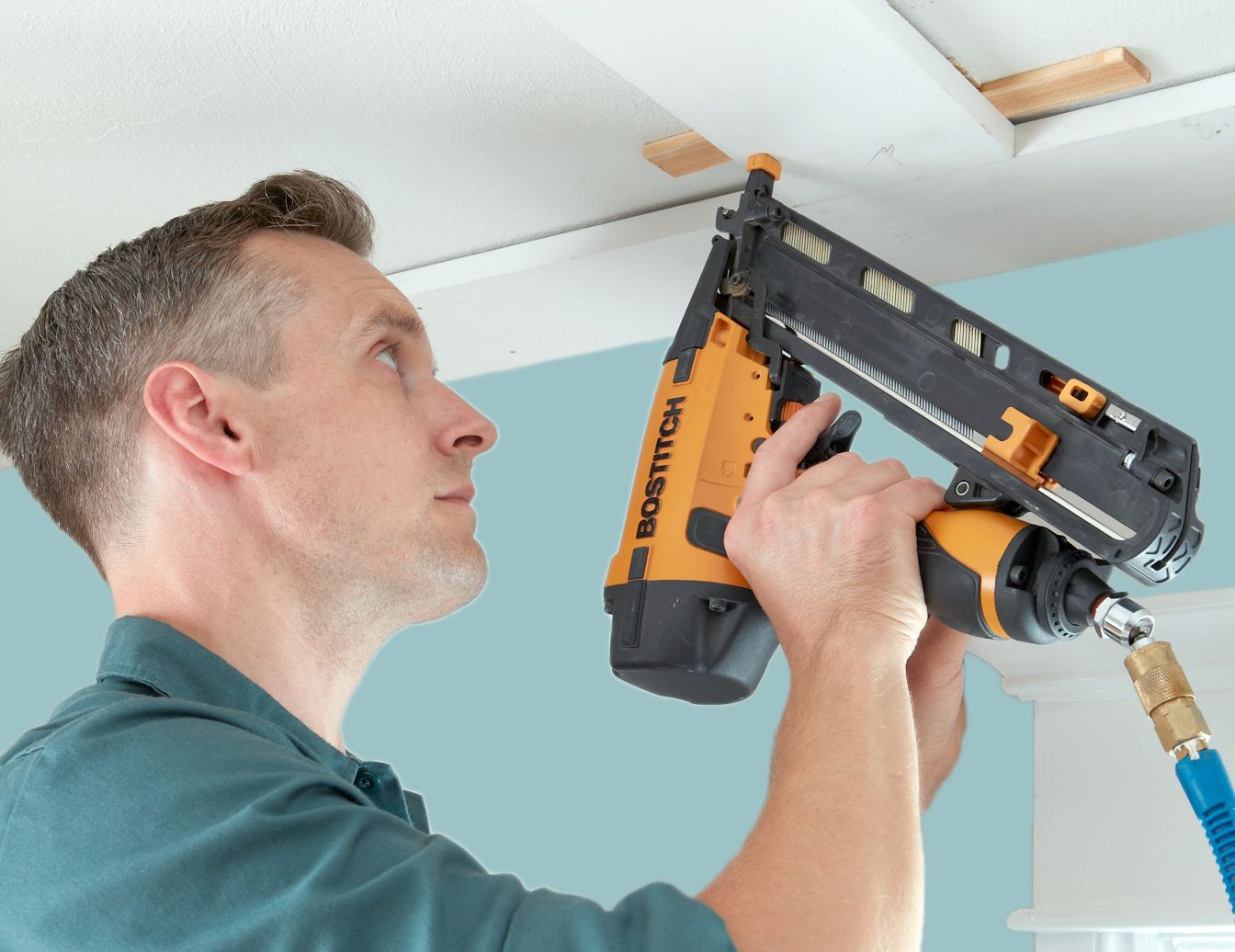
Scribe and cut the main beams the same way you did for the perimeter crossbeams in Steps 5 and 6.
Apply adhesive to a beam and pressure-fit it in place, using your deadman to hold one end. Use shims to make the joints flush as needed, nailing through them and into the ceiling at every joist. Install the other main beam the same way.
Step 9: Cut the Crossbeams

Cut the board for the first crossbeam 1 to 2 inches too long for the space between two main beams.
Use the scribing technique from Step 5 to cut first one end and then the other, to create a tight fit. Dry-fit the piece in place, as shown. If sized correctly, the crossbeam should fit snugly in place.
Step 10: Mark Joint Locations on the Crossbeams
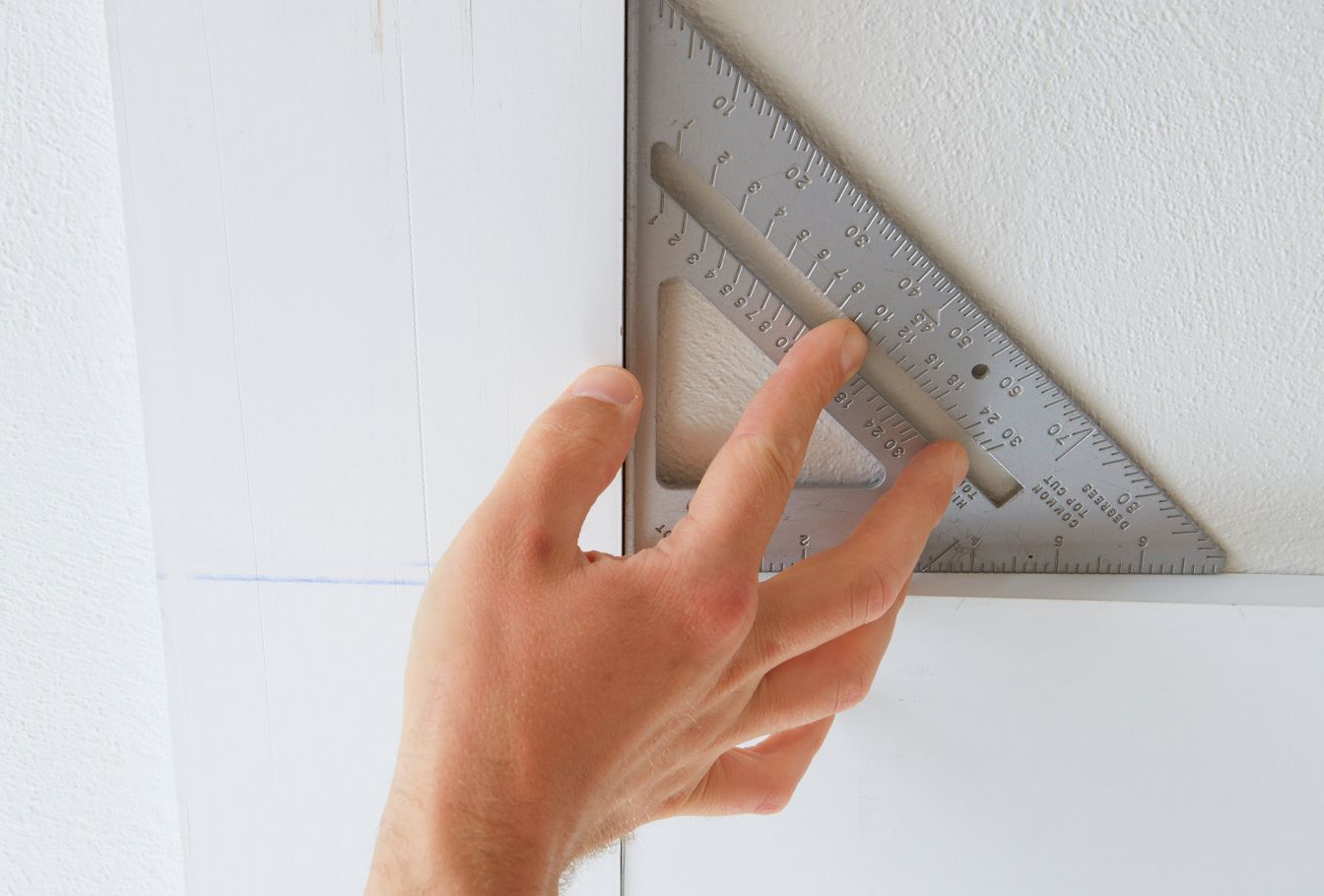
Use a rafter square to confirm that the joint at each end is at a 90-degree angle, and mark where both edges of the crossbeam meet the main beams.
Step 11: Toenail the Joints
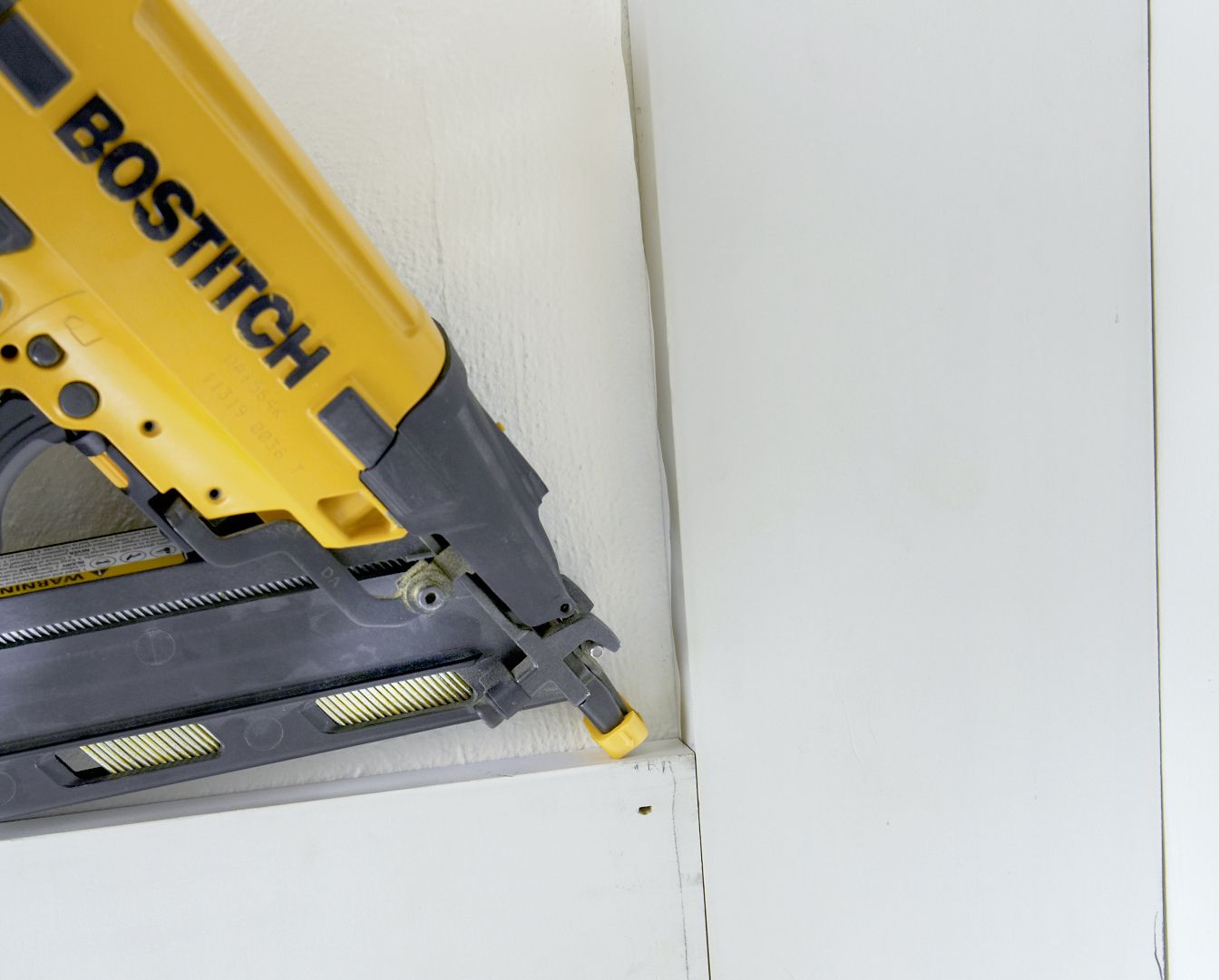
Pop the piece out, apply adhesive, and set it back. Shoot a nail through each corner of the crossbeam into the ceiling. Then, with your nail gun held at about a 45-degree angle to the joint, toenail through the corner of the crossbeam and into the main beam. Toenail the other corners of the crossbeam, too. This will help hold the joints together as the wood expands and contracts with the seasons.
Step 12: Scribe the Molding

Measure the interior dimensions of all four sides of the first coffer.
On your miter saw, cut inside 45-degree angles on each end of your molding, leaving each piece about ¼ inch too long. Scribe each piece by holding it in place, as shown, and marking the overhanging material.
Step 13: Finish-Cut the Molding
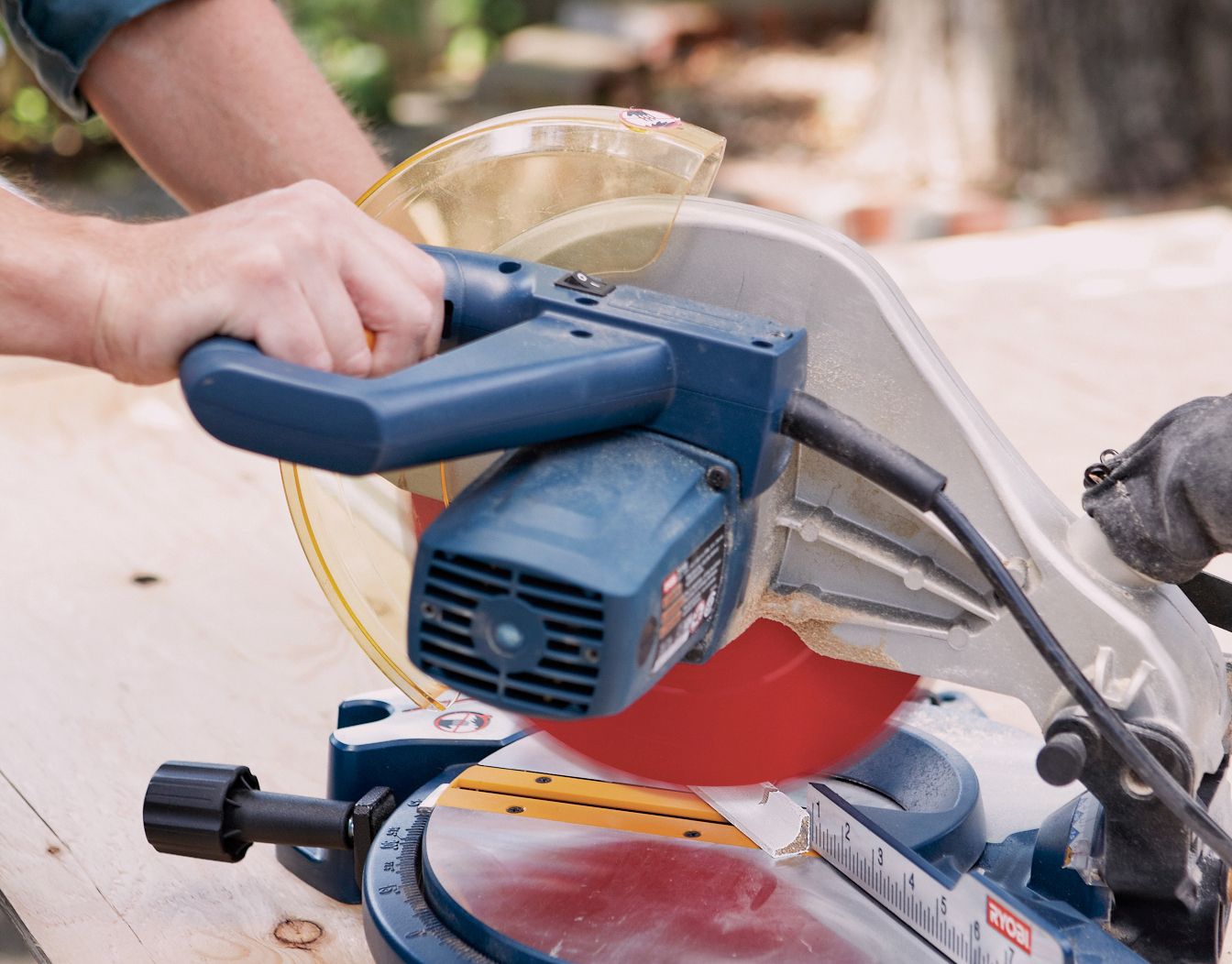
Trim the excess on your miter saw, as shown. Dry-fit the piece in the coffer. Repeat the process until all the pieces fit snugly in place.
Step 14: Glue and Nail the Molding
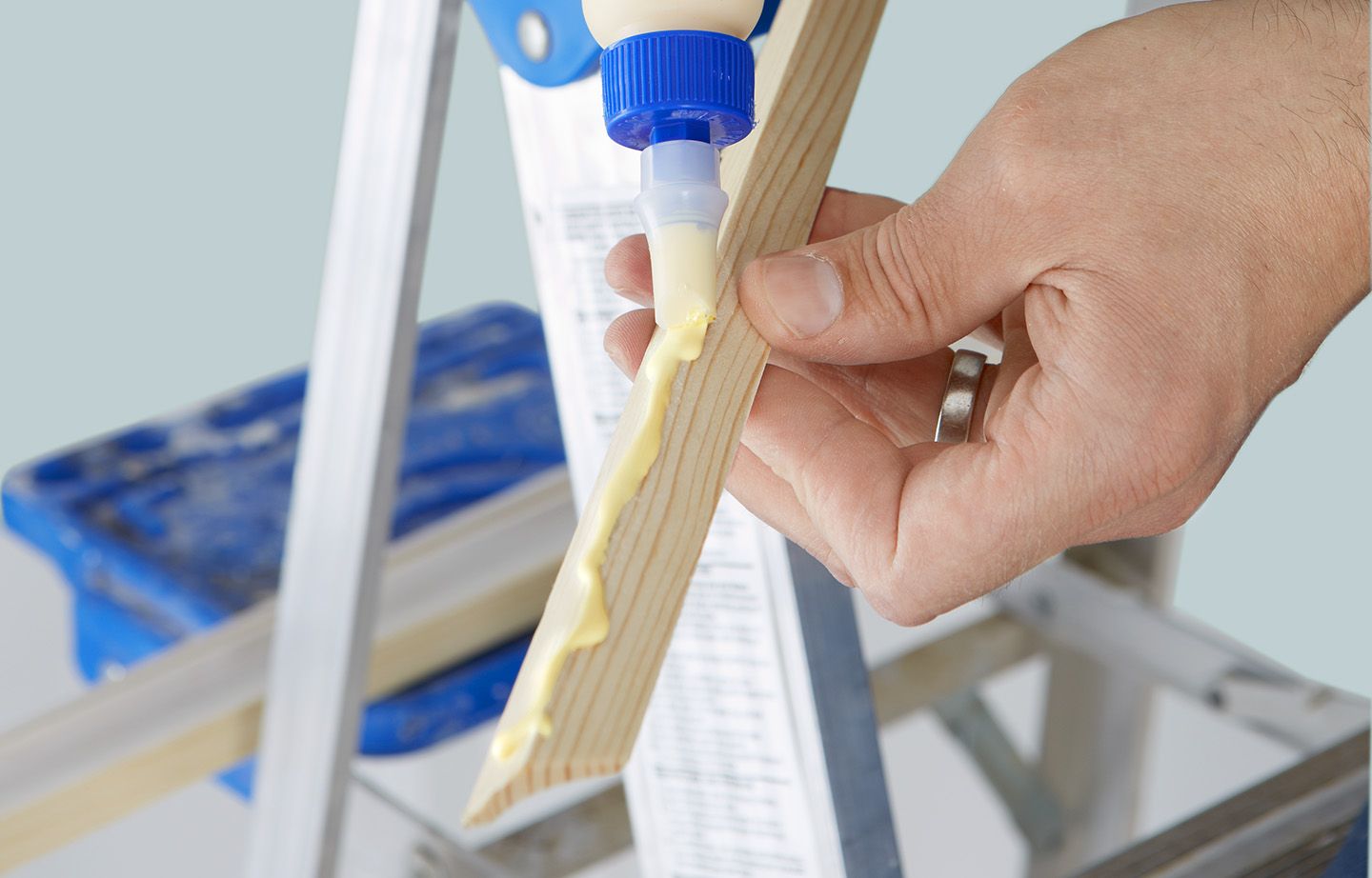
Apply wood glue to each piece of molding (panel adhesive is thicker than wood glue and could cause the molding to stand off the beams). If you have gaps between the ceiling and the beam, split the difference when you set the molding in place to hide any variation across the coffer.
Use an 18-gauge brad or pin nailer to nail the molding in place. Repeat the process on all the coffers. Apply latex caulk as needed to finish the joints and cover any gaps.
Step 15: Prep and Paint
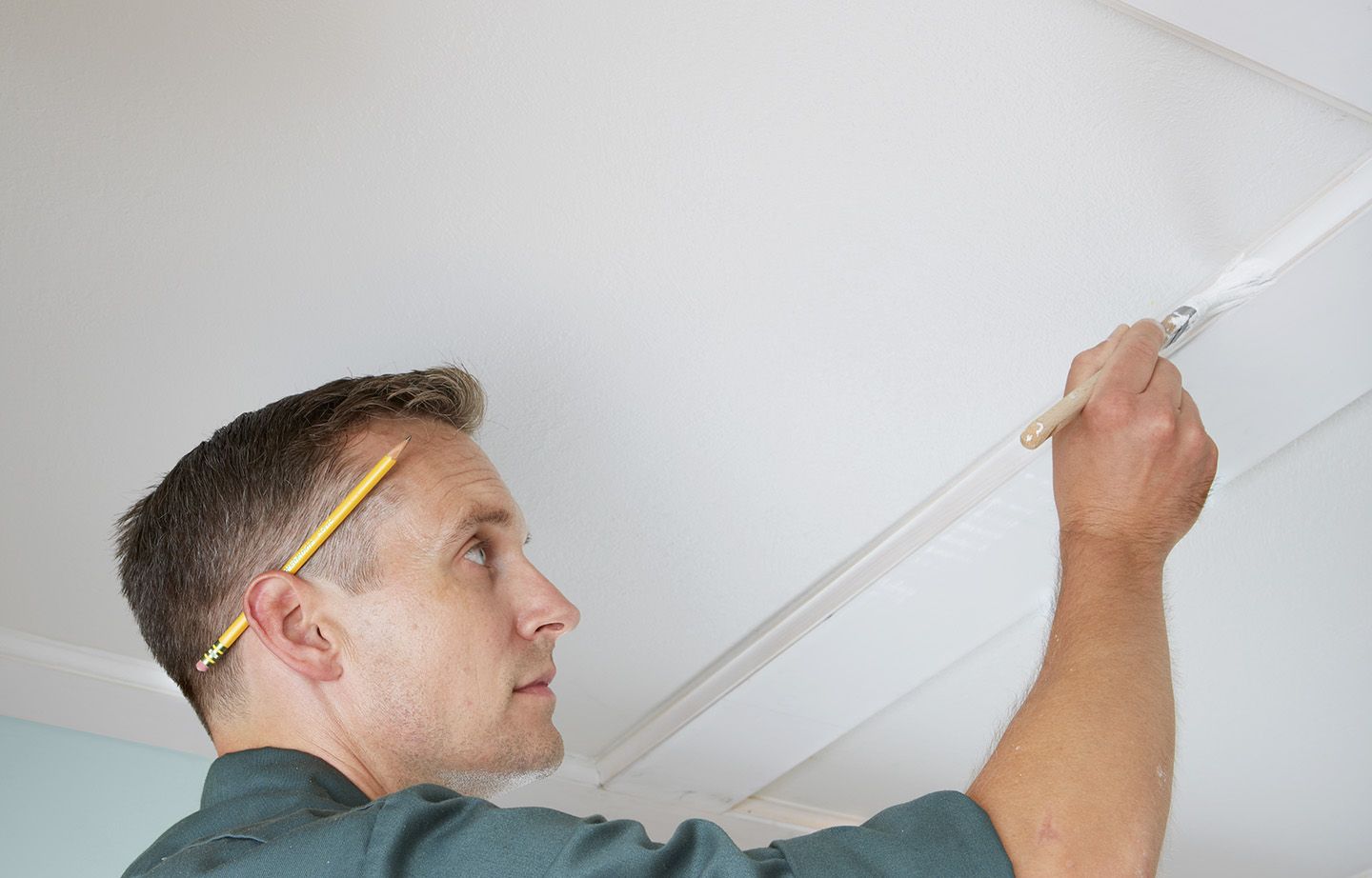
Apply wood putty with a putty knife to the nail holes. Sand the putty smooth.
Use a 2½-inch sash brush and semigloss paint to finish the molding. Then use a small paint roller to finish the beams.
Troubleshooting Common Issues
Despite careful planning and execution, you may encounter some issues during installation. Here are a few common ones.
Gaps Between Beams and Ceiling
If you notice gaps between the beams and the ceiling, use moldings to cover these imperfections. Carefully measure and cut to ensure a snug fit that hides any discrepancies.
Difficulty in Aligning Beams
Aligning beams perfectly can be tricky. Use a laser level to ensure accuracy.
Nail Holes and Imperfections
Wood putty can easily fix small nail holes and surface imperfections. Apply the putty, let it dry completely, and then sand it smooth.
